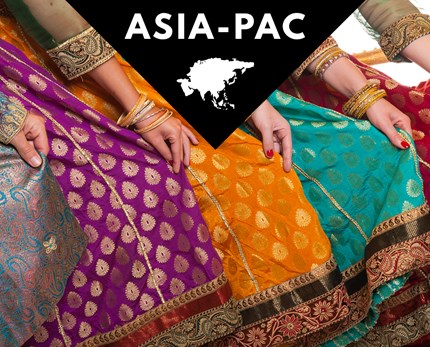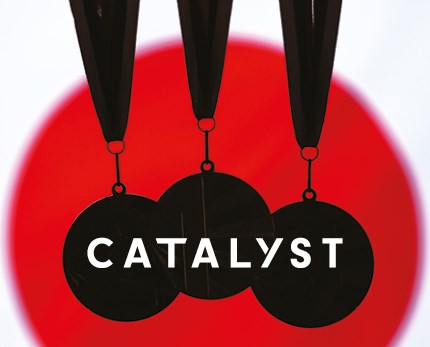Brands must go beyond transliteration for regional customers

- 21 December 2020
India's vernacular user base cannot be catered to through transliterations or translations of central campaigns. To truly access regional customers, brands must go further
The Indian market is much like India itself: multi-layered, multi-hued and unique. Yet despite its 22 major languages in 13 different scripts and more than 720 dialects, vernacular never got fully integrated into marketing and media content, possibly due to the dominance of English among marketing and media personnel and a homogenised industry. The last few years have been an inflection point.
Today nine out of ten new internet users in India consume content in Indian languages, with mobile internet at 91% penetration across the region.
According to a Google KPMG report, 70% Indians find digital content in regional language more reliable. Additionally, 88% Indian language internet users are more likely to respond to a digital advertisement in their regional language as compared to an English advertisement and 90% of all video consumption is in regional languages.
Business growth in the next five years is going to come from three ‘M’s - middle India, middle income and millennials. This puts the use of vernacular at the heart of the conversation for a range of engagements from brand communication to content strategies for media companies.
Localisation of content and communication strategies is not a mere translation of content but requires building a cultural context in the language of the target user. The key aspects of localisation span language, geographical context, cultural nuances, formats of content and distribution strategy:
1) Language
Consumers do not use content through transliteration. While English continues to have a high aspirational quotient in India, new users are opting to access digital content in their native tongues or use a combination of vernacular and English.
Localisation of a brand campaign has two aspects: the brand tonality and the target group. It is critical to ensure that the brand tonality is never compromised, whilst the target group dictates the context and the language.
In many national campaigns of consumer-packaged goods, brands create one jingle which uses popular words and terms familiar across regions. For better impact, these jingles are transliterated in local scripts, without changing the actual word. This is done to retain the quality and impact of messaging and format. However, body copy is written in local language to communicate features and benefits.
2) Geographical location
Britannia Industries is an Indian food products conglomerate. The company sells its Britannia and Tiger biscuits brands throughout India and in more than 60 countries across the world. The company decided not to take its flagship brand, Tiger biscuits, to the Sri Lankan market due to the negative association attached to the word “tiger”. The militant organisation LTTE, also known as the Tamil Tigers, was responsible for national insurgency for over two decades in Sri Lanka. The company eventually launched all its biscuits in Sri Lanka under the umbrella brand Britannia.
3) Cultural context
This challenge of localisation is more complex for interactive digital platforms engaging with audiences spanning across multiple geographies and languages.
Parentune.com, a rapidly growing specialised parents' network with over three million users, in five languages across 25 states in India, found significant success in engaging with vernacular audiences.
Initially, it picked its top 100 English blogs and translated them into Hindi. This bombed with the audience as it lacked context. The company then began context-building with data, mapping what users were searching for on the platform and supplementing this with the context of conversations on specific issues.
These varied vastly by language and location. English-speaking users were curious about health while Hindi language users were focused on questions around food and nutrition. Its English-speaking user base was more homogeneous across regions and its vernacular users needed more rigorous psychographic and regional segmentation by cultural beliefs, motivations, taboos and seasonality.
By building its own IP with ‘Vinglish’ (Vinglish is when users use the English alphabets to communicate in a vernacular language) and response mechanism which responds to user queries in the colloquial version, the retention of users is 1.8 times higher compared to the base, and the virality is 1.28 times higher.
4) Format
Content pieces created must be prioritised in preferred storytelling (fiction, gaming, VR, animation, documentaries) and technical formats such as video, voice, text. Retail brands must include regional and cultural nuances in their store format and experience.
Tanishq, a national jewellery brand by the TATA group, has customised its communication, store formats, experiences and service levels to every Indian state it operates in. This has helped them break into the high-transaction wedding jewellery business in India, with non-standardised regional variations of its showrooms in different states to build affinity among regional consumers.
5) Platforms
Vice Media India launched in 2018 with multiple content series in English, Hindi and Hinglish. It not only experimented with the localisation of content through context and language but successfully localised its distribution model in India through novel partnerships with local millennial platforms like Indiatimes (social news app), Dailyhunt (leading news aggregator) and Voot (Viacom’s OTT in India) in addition to its global partnerships like YouTube and Facebook.
Ultimately, regional audiences demonstrate a distinct behaviour and cannot be catered to through transliterations or translations of central campaigns. Brands require a deeper understanding of cultural nuances to help create unique campaigns with ideas, visuals and messaging which resonates.
This article was originally published in the Asia-Pacific section of CIM's member-only magazine, Catalyst, in April 2020. If you want to gain access to more global insights from a range of international marketing leaders in quarterly editions of Catalyst magazine, find out how you can become a member of CIM for as little as £15 a month.

- 0 views

 FAQs
FAQs
 Log in
Log in
 MyCIM
MyCIM





